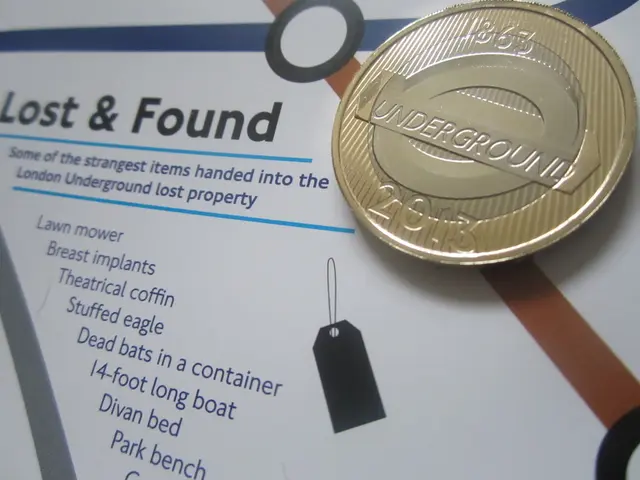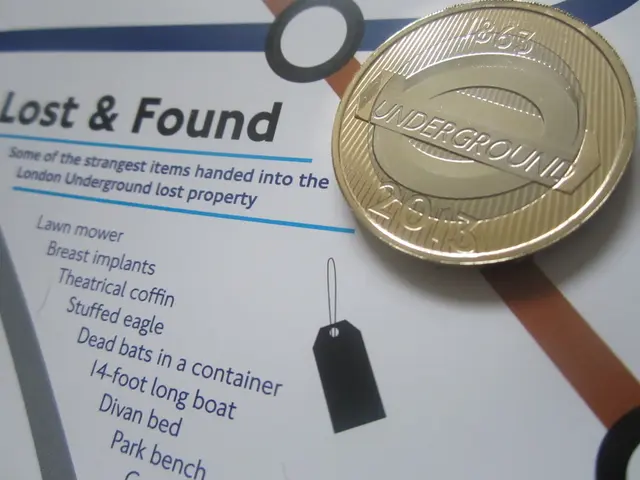Scrutiny Over Lifetime Isa: MPs Raise Concerns About Potential Disproportionate Funding for Wealthier First-Time Home Buyers
In the realm of personal finance, Lifetime ISAs (LISAs) have been designed to help first-time home buyers save for their first property by offering a government bonus on savings. However, recent critiques and a parliamentary Treasury Committee report have highlighted significant issues affecting their effectiveness, particularly for lower-income individuals.
The key issues facing LISAs include an outdated house price limit, a disproportionate penalty structure, and complexity due to the product's dual purpose. The £450,000 property price limit, unchanged since the scheme's launch in 2017, has become a barrier for many first-time buyers, especially in expensive regions like the South East of England. Withdrawing funds to buy a more expensive property incurs a 6.25% penalty on the entire amount withdrawn, effectively reducing even the saver's own contributions.
The penalty on withdrawals for anything other than buying a qualifying first home or retirement is seen as disproportionate and unfair, deterring many, especially from lower-income backgrounds, from opening or using LISAs. The LISA’s design as both a first home purchase and a retirement savings product can also confuse consumers and lead to poor financial decisions.
To better serve lower-income individuals, several improvements have been suggested. These include removing or updating the property price limit, reducing or eliminating withdrawal penalties, simplifying the product, and encouraging investment options for growth. Raising or removing the £450,000 house price cap would align the scheme with current market realities, eliminating the unfair penalty when buying more expensive homes and improving access for many buyers.
Changing the penalty to only withdraw the government bonus without clawing back savers' own money would make LISAs less risky and more attractive, especially for those with unstable finances or unexpected expenses. Clearer communication, tailored guidance, and alternative products for those on benefits or with lower incomes may prevent mis-selling and improve suitability. Expanding investment choices within LISAs can help savers, potentially including equities or bonds, to better grow their funds over time.
In the five years to 2030, Lifetime ISA bonuses are expected to cost the Government £3 billion. Despite these costs, personal finance experts have urged the Government not to scrap the Lifetime Isa accounts, as they have helped many people to buy a home who may not have been able to without the help that a Lisa product has offered.
However, the Treasury Committee has recommended that the Treasury should assess whether the Lifetime Isa effectively targets people who need financial support. The Committee has also warned that Lifetime Isa bonuses may involve significant spending of taxpayers' money in a way that may not be precisely targeted. The Committee has also expressed concerns that Lifetime Isa bonuses may not be precisely targeted and has suggested that the Government should assess whether the Lisa is the best way to support people who need help to get on the property ladder.
In conclusion, while Lifetime ISAs have helped many first-time buyers, their rigid rules, outdated property price limits, and penalty structure hinder their ability to effectively support lower-income individuals. Addressing these issues through updated limits, fairer penalties, clearer communication, and more flexible investment options would make LISAs a more inclusive and effective tool for helping first-time homebuyers and savers on lower incomes.
- In the realms of personal finance and property, ongoing discussions revolve around the challenges faced by Lifetime ISAs (LISAs), particularly for lower-income individuals.
- The government's financial assistance through LISAs is hindered by obstacles like outdated property price limits, excessive withdrawal penalties, and the product's complex nature due to its dual purpose.
- To cater to lower-income individuals more effectively, suggestions for improvements include removing or updating the property price limit, reducing or eliminating withdrawal penalties, simplifying the product, and promoting investment options for growth.
- Modifications, such as raising or removing the £450,000 house price cap, could align the scheme with the current market realities, fostering inclusivity and eliminating unfair penalties for more expensive homes.
- To further improve LISAs' attractiveness and manageability for lower-income groups, measures like changing the withdrawal penalty, providing clear communication, tailored guidance, and alternative products may be considered. Expanding investment choices within LISAs, such as equities or bonds, could help savers grow their funds more effectively over time.








